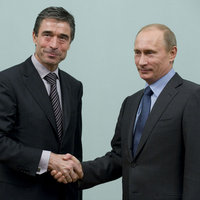The Economist recently broke the news that NATO would soon develop contingency plans to defend Estonia, Latvia, and Lithuania against Russian attacks. In an unexpected shift in policy, the new plans would mark the first time since the end of the Cold War that the Atlantic Alliance has specifically pinpointed Russia as a threat.
NATO has been down this road before. In October 2008, Gen. John Craddock, then NATO's supreme commander, asked the members of the alliance for permission to draft Baltic defense plans. But at the time, France and Germany disapproved, out of fear that it would compromise NATO's relations with the Kremlin. Regardless of changes in the alliance's assessment of threats since late-2008, these concerns should be as valid as ever. New contingency plans that label Russia as a potential enemy would signal a return to Cold War politics and likely produce unfavorable consequences.
One rationale for the new plans dates back to May 1997, when NATO officials promised Russian leaders that they would not permanently station "substantial combat forces" on the territory of the Baltic States and other potential alliance members from the former Warsaw Pact countries. Proponents of the new defense plans argue that this pledge -- coupled with the region's geographic location -- leaves those members uniquely vulnerable to Russian aggression.

